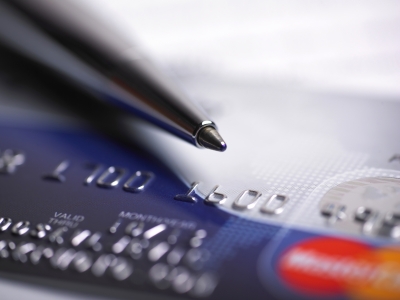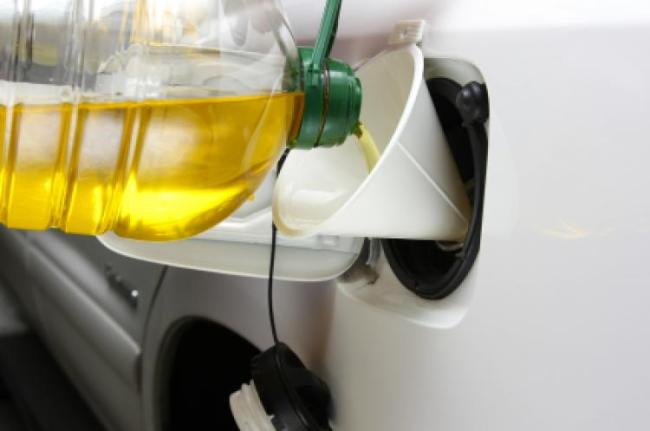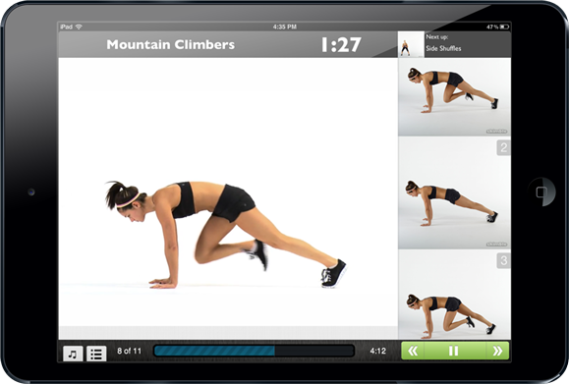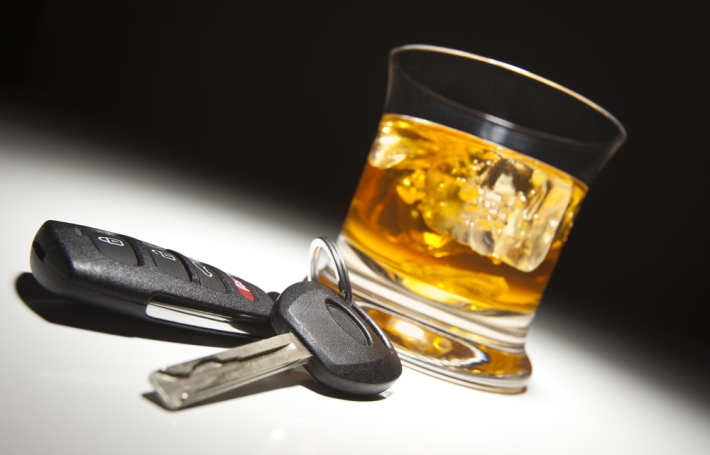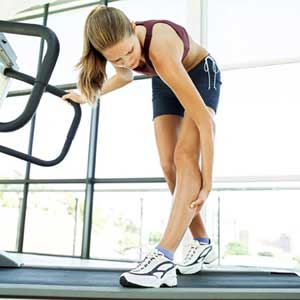Using Knives
Slicing and dicing in the kitchen?
Don’t get cut by being careless…
- Cut in the direction away from your body
- Keep your fingers and thumbs away from the cutting line
- Never grab a falling knife
- Never place a dirty knife in a sink full of soapy water
- Carry knives with the cutting edge angled slightly away from your body with the tip pointed down to your side
For more information on knive safety and how it can affect your insurance, contact your agent.
Managing Credit Card Debt
Your personal credit score is just as important as some of the other important numbers in your life…your blood pressure, your body mass index and your waist measurement. This number is based on personal credit management such as collection, length of credit history, types of credit cards used and applications for new credit. Financial institutions calculate your credit score, which determines what type of interest rate you will receive on a mortgage or credit card. Many other institutions are now using credit scores to calculate how high your health and auto insurance premiums will be as well.
Get Debt in Check!
Consumers who pay their balances on credit cards, pay mortgage payments on time and avoid late payments receive favorable credit ratings. This is important when considering how much you could pay in interest because you received a higher rate as a result of a low credit score.
Don’t despair. Even if your credit score is less than perfect, we’ve got some advice to get you back on track!
Tips for Those Who Want a Solid Credit Rating:
- Treat your credit cards like cash; deduct money from your checking account every time you make a purchase.
- Pay the entire balance of your credit card each month.
- Limit the usage of credits to two or three maximum and select cards with no annual fees, 25-day grace bill periods, rebate incentives or other incentives (airline miles, auto points, etc.) programs and single-cycle billing.
- Use your credit card with incentives for regular expenses such as groceries, utilities and gasoline.
- Conduct an assessment of your expenses quarterly and make adjustments to your spending if you are going over budget. Use a debit card only to curb spending.
Additional Tips for those who Need a Little Credit Boost:
- Enroll in a pre-paid credit card program in which you load money onto the credit card for purchases. Once you’ve reached your set limit, the card will not work.
- Establish a budget that includes a debt repayment plan monthly. As you pay off balances, call the creditor and ask them to close your account so that you are not tempted to use the card again.
Seek out financial assistance if you feel overwhelmed by debt. By reaching out to a financial advisor, you will be able to find specific ways in which you can minimize your debt and improve your personal financial situation. For more information on how this does affect your insurance, contact your agent.
Going Green When You Drive
Climbing gas prices and an increased focus on the effect fossil fuels have on the environment have drivers looking for ways to not only to keep costs down but also to protect the planet.
Drive Green
Vehicles that run on gasoline release greenhouse gases into the atmosphere. These gases contribute to climate change, air pollution and disease. To get better gas mileage and release cleaner emissions, drive a hybrid vehicle – these cars run on electricity, not just gas. Whether you get a hybrid or not, select a car that gets the best miles per gallon (MPG).
- Use vegetable-based biodiesel fuel in diesel cars and trucks.
- Use ethanol gas if your vehicle can use it.
- Buy an electric car or plug-in hybrid vehicle.
Change Your Driving Habits
The way you drive can affect your fuel economy.
- Avoid sudden starts and stops and drive the speed limit.
- Keep your engine speeds between 1,200 to 3,000 RPMs and up-shift between 2,000 to 2,500 RPMs.
- Do errands in one trip.
- Get directions to avoid getting lost.
- Turn off your car if you will be idling for more than a minute.
Keep Up On Maintenance
Make sure you get regular tune-ups on your vehicle, including oil changes and cleaning your air filter. Don’t forget these other maintenance suggestions:
- Check your tire pressure. Underinflated tires means the engine has to work harder, resulting in burning more fuel.
- Remove excess items in your vehicle – extra weight can have an effect on your fuel economy.
- Avoid using the air conditioner. Instead, open your windows, use an electric or solar fan, park in the shade or use a reflective windshield shade to keep your car cool.
Find Alternatives to Driving
- Carpool with coworkers and friends.
- Try a car-sharing program, such as FlexCar or ZipCar.
- Use public transportation, walk, rollerblade or bike to places you need to be.
- If possible, try altering your commute. Avoiding peak traffic times
can mean less gas is spent in stop and start traffic.
Did You Know?
Vehicles that get better gas mileage can save you hundreds of dollars every year. To find out how efficient your vehicle is compared to others, check out www.fueleconomy.gov.
For more information on going green when you drive, contact your auto insurance agent.
Prevent Spring Problems with Winter Preparations
Spring planting is drawing closer with every passing day. Are you ready? Taking time this winter to prepare for the spring rush can help you avoid problems and delays when you finally hit the fields.
Ensure all farm vehicles are in proper working order. Check the lights, and make sure all reflectors, including the slow moving vehicle emblem, are intact.
Begin exercising a few weeks before spring planting. Months of relative inactivity can leave the body unprepared for strenuous activity, which can lead to muscle and soft tissue injuries.
For more information on preparing for spring or your insurance policy, contact your agent.
Is Your Workout Tech-savvy?
While technology is not a mandatory addition to your workout, many individuals find it useful and even motivating. Music players are only the tip of the iceberg—whatever your fitness regime, there’s probably some sort of device or app for it.
If you’re looking to make your solo workout more exciting and interactive, fitness gaming, or active video games, might be for you. From yoga to boxing to tennis, there are many types of fitness video games that really do make you break a sweat.
For smartphone lovers, there are apps that can remind you it’s time to exercise, and track distance travelled, your course and workout time—some of these apps are even available to download for free.
Those numeric-minded individuals looking for measurable results may find pedometers, heart rate monitors and multi-purpose tools useful. From measuring sleep quality to tracking the number of calories burned, these tools record workout and daily activity levels.
If your workout routine hits a bump in the road, try giving it a technological twist—you may find it’s just what you need to boost motivation and get back on track.
For more information regarding online tools to help keep you active, contact your mobile phone provider. For more information regarding life insurance, contact your agent.
Don’t Get Distracted Behind the Wheel
It is widely accepted that driving under the influence of alcohol poses a serious danger to the impaired driver and other motorists on the road. However, a recent study from the University of Minnesota found that talking on a cell phone while driving impairs one’s ability even more than driving while intoxicated. Talking on a cell phone and other driver distractions pose a major hazard to everyone on the road!
Decreasing Distractions
While there is little that you can do to control other people’s driving, there is plenty that you can do to reduce the distractions in your own vehicle. To minimize risks while driving:
- Do not talk on your cell phone or use the text messaging feature. If you absolutely must conduct a conversation, do so using a hands-free device and speed dial.
- Never touch up your makeup or hair in the rearview mirror. You’ll look the same once you get to your destination as you do while your foot is on the gas.
- Limit your conversations with passengers and ask them to keep their voices down so you can concentrate.
- Do not smoke while you are driving, as you will probably pay more attention to not burning yourself, putting out the cigarette or inhaling than driving safely.
- Only adjust the radio or CD player when you are completely stopped.
- Never allow animals to sit on your lap while driving.
- Do not eat or drink while driving.
- Avoid reading maps or directions. Instead, pull into a parking lot to get your bearings and determine where you need to go next to reach your final destination.
- Do not take notes or search for phone numbers.
- Never use a cell phone (even with a hands-free device) in bad weather, work zones or heavy traffic.
Avoiding claims and accidents are the two things that you should always be concentrated on when operating a vehicle. For more information on auto insurance, contact your agent.
Organ Donation
More than 114,000 Americans are currently on the waiting list for an organ donation, but last year only 14,147 organs were donated.
There are two systems for organ donation: opt-in and opt-out. Most European countries operate on an opt-out system, which assumes that a person is willing to donate their organs, though individuals are free to opt-out.
The United States uses an opt-in system for organ donation, so people are required to designate in advance that they are willing to donate their organs. If a person is not a registered donor, that person’s organs cannot be given to people on the organ donor list.
A single organ donor can save up to eight lives, so consider registering as a donor at www.organdonor.gov.
DID YOU KNOW
More than 80 percent of people on the organ donation list are waiting for a kidney, but most children under the age of 5 on the list are waiting for a liver transplant.
For more information regarding organ donation and how you can get involved, contact your physician. For more information regarding your life insurance, contact your agent.
Eat Well, Live Well
Replacing unhealthy eating habits with healthier ones can be difficult, especially if unhealthy habits are all you’ve ever known. One key to making lasting improvements in your diet is to make changes in stages. Start with a small, simple change and stick to it for a week. After one change has been mastered, add another.
Some Ideas to Get You Started
- Eat breakfast.
- Replace one sugary drink per day with a glass of water.
- Eat one to two more fruits or vegetables each day.
- Plan a healthy snack for each day of the week.
- Switch to a low-fat version of one of your favorite foods.
- Plan three meals and two snacks every day.
- Plan as many home-cooked meals as you can, as they usually have fewer calories, more reasonable portions and cost less than typical meals eaten at restaurants.
Set an Example
Parents play a big role in guiding their children’s eating habits with the examples they set, the foods they make available in the home and the mealtime experiences that they create for their families.
Offer healthy snacks such as fruit, low-fat cottage cheese or yogurt, frozen juice bars, applesauce, celery, apples with peanut butter, raw vegetables, graham crackers, fig bars or whole wheat crackers with low-fat cheese. Large portions contain too many calories. A good-sized snack for a typical adult may be a single-serving container of yogurt, but for a preschooler, two or three tablespoons of yogurt is enough.
Make Eating an Enjoyable Activity for the Whole Family
Family meals can be a time to monitor what children are eating and to reconnect with each other. Involve children in food preparation and clean-up, and sit down with them when they eat. The idea is to build healthy lifelong eating habits.
Some healthy eating tips include the following:
- Eat plenty of fruit and vegetables—half your plate at each meal should be vegetables or fruit.
- Beware of sweetened drinks—sodas and sports drinks are high in calories. Keep in mind that the calories in juice can also quickly add up.
- Choose food sensibly when eating out. Restaurants are often required to make nutrition information readily available—if you don’t see brochures sitting out, or nutrition information listed on the menu, ask.
Healthy Food Tips When Eating Out
- Ask if you don’t know what is in a dish or the serving size.
- Eat the same portion size you would at home.
- Ask for sauces, gravy and dressings on the side—or avoid them altogether.
- Order foods that are not breaded or fried.
- Order fruit for dessert.
- Ask for substitutions, such as a vegetable instead of fries.
- Ask for low-calorie versions of food. Vinegar and oil or a squeeze of lemon are both better than high-fat dressings or sauces.
Did You Know…?
Substituting chips and candy bars with snack-sized portions of veggies will cut down on the calories and cholesterol in your diet. Not only are most vegetables low in calories and fat, but they are all cholesterol-free.
For more information on diets to keep you living healthy, contact your physician. For more information regarding life insurance, contact your agent.
Relief During Allergy Season
|
Allergy symptoms such as sneezing and red, itchy, watery eyes are common during the spring and summer months when plants are budding and blossoming outside. To get some relief during allergy season, consider the following recommendations:
Contact your physician to learn more about the prescription and over-the-counter medications used to treat seasonal allergies. For more information regarding your insurance, contact your agent. |
Avoiding Common Workout Injuries
Diving headfirst into an intense exercise routine can be dangerous. Take care to ensure you’re putting safety first in every workout. Here are some common exercise-induced injuries and ways to avoid them:
- Knee pain – This can be caused by not warming up first when running on a treadmill. Generally the pain comes from the hips and can be avoided by doing some simple warm-up exercises, such as a plank, or keeping your back and waist straight and bending forward at the hip. Knee pain can also result from bike seats being too far forward, which is common in spinning classes.
- Shin splints – Stretching or walking to warm up before running will help you avoid the ache of shin splints. Shin splints come from imbalanced calves (i.e., the shin is less developed than the muscle), and should become less frequent with regular exercise.
- Sprains and strains – Rolling an ankle or extending a joint too far can end painfully. Strengthen your joints before starting workouts that require quick movements and great flexibility. Flexing your joints away from you while using exercise bands can really help to strengthen joint muscles.
For more information on workout tips, contact your physician. For more information regarding your insurance, contact your agent.


